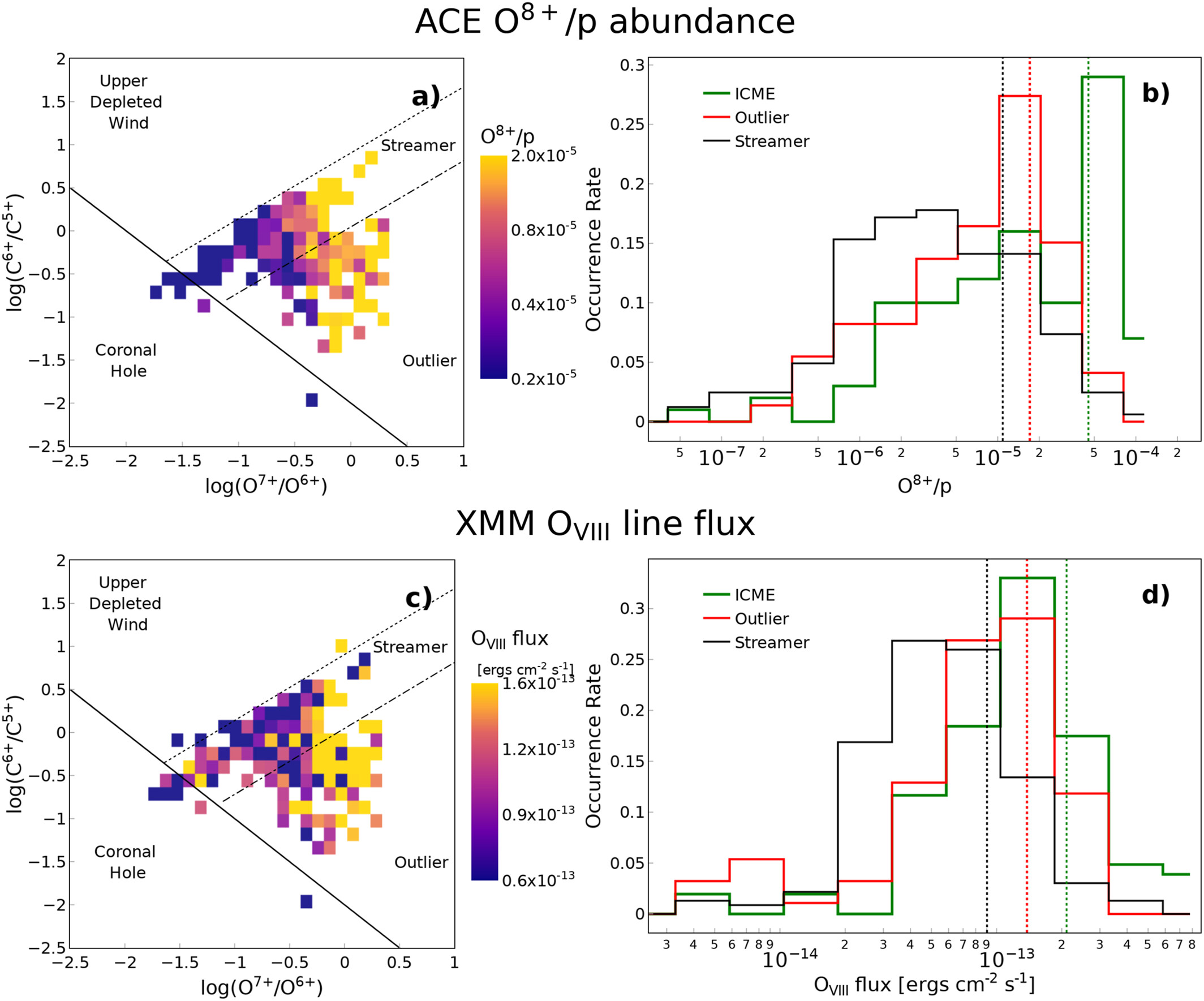MIST
Magnetosphere, Ionosphere and Solar-Terrestrial
Can XMM-Newton Be Used to Track Compositional Changes in the Solar Wind?
By Simona Nitti (University of Leicester)
Continuous monitoring of the solar wind ion composition is vital for understanding solar-terrestrial interactions, particularly through the study of Solar Wind Charge Exchange (SWCX) emission. SWCX produces soft X-rays (<2 keV) when highly charged solar wind ions (e.g., O7+, O8+, C6+) interact with neutral atoms. This emission is ubiquitous across the solar system, occurring wherever the solar wind encounters interstellar neutrals or interacts with planetary environments, including those of Earth, Mars, Venus, Jupiter, and Pluto.
In this study (https://doi.org/10.1029/2024JA033323), we investigated whether SWCX emission from Earth’s exosphere, observed by the XMM-Newton telescope, can be used to infer solar wind composition. By comparing spectral line intensities extracted from XMM data with ion abundance measurements from the ACE spacecraft at L1, we found that OVIII emission closely tracks O8+ abundances. In contrast, other ions involved in the SWCX process—such as O7+, C6+, C5+, and Mg11+—do not exhibit a consistent correlation between their abundance and X-ray emission.
To explore whether XMM data still encodes information about the solar wind state, we employed a Random Forest Classifier to predict solar wind types, following the classification scheme by Koutroumpa (2024). Incorporating XMM features alongside proton parameters significantly improved model performance, with a macro-averaged F1 score of 0.80 ± 0.06, compared to 0.55 when using proton data alone. Notably, XMM emission features ranked among the top five most important inputs. Moreover, XMM emission features ranked among the top five most important predictors. This suggests that, while individual ion abundances cannot currently be inferred directly from emission fluxes, XMM still provides valuable insight into the solar wind type, from which an average compositional profile may be inferred. This work is particularly timely given the degradation of the heavy ion spectrometer onboard the Advanced Composition Explorer (ACE), which has left the scientific community without reliable near-Earth ion composition measurements since 2011.
 (a) SWCX periods ACE O8+/p (where p is proton density) 2D histograms, averaged over their occurrence between 2000 and 2009, in a (O7+/O6+)×(C6+/C5+) space, with black lines separating different solar wind types.
(a) SWCX periods ACE O8+/p (where p is proton density) 2D histograms, averaged over their occurrence between 2000 and 2009, in a (O7+/O6+)×(C6+/C5+) space, with black lines separating different solar wind types.
(b). Occurrence rate of ACE O8+/p for the Streamer (black), Outlier (red) wind and ICMEs (green).
(c) (d) Same as left plots but for OVIII ion line fluxes from the XMM SWCX data set.
See publication for details:
, , , , , , & (2024). Can XMM-Newton be used to track compositional changes in the solar wind? Journal of Geophysical Research: Space Physics, 129, e2024JA033323. https://doi.org/10.1029/2024JA033323